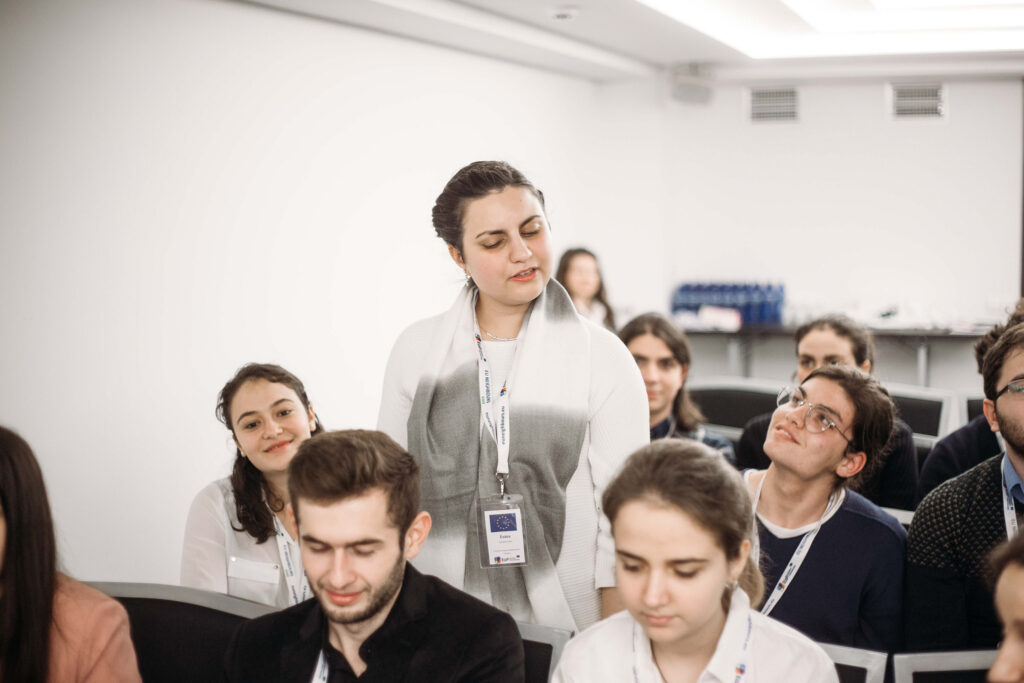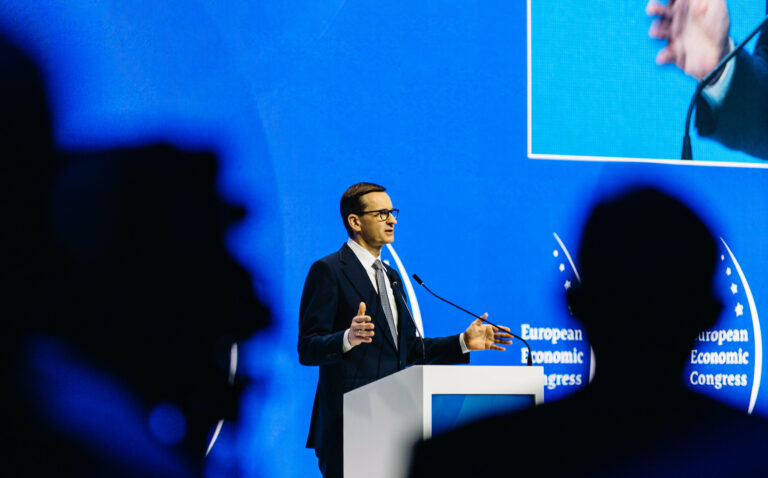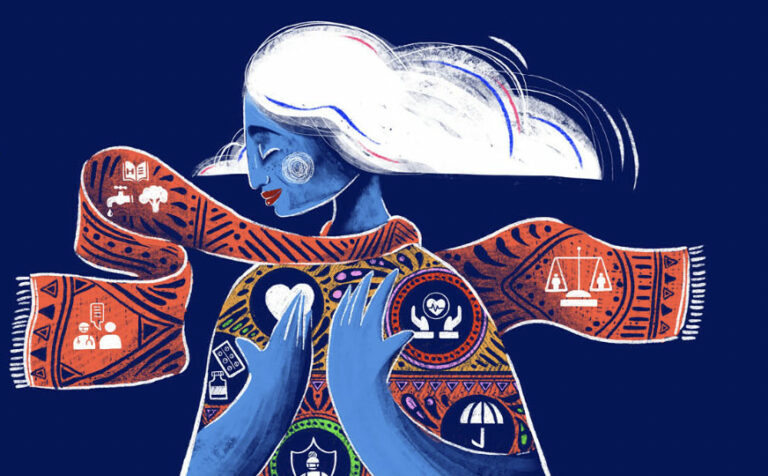
Going on a school tour – my first adventure as a YEA
Hi everyone, I’m Esma from Georgia and I would like to share a story with you about my first experience as a Young European Ambassador (YEA).
One week following our induction in Georgia, a group of YEAs from our country toured 10 schools and 10 villages in the Tetritskaro Municipality, visiting two schools per day. We shared information about the EU, its history, values and structure as well as the Eastern Partnership and the EU’s cooperation with Georgia. We also discussed the dozens of opportunities offered by the EU to youth from the six Eastern Partner countries (Georgia, Armenia, Azerbaijan, Ukraine, Republic of Moldova and Belarus), including Erasmus Plus student exchange programmes and other youth exchanges. Among the most interesting topics for the school pupils were the YEAs’ initiative and the European Voluntary Service;(EVS), which offers young people the possibility to volunteer in the EU. We also mentioned the EaP International School, which recently opened in Tbilisi and to which school pupils from the EaP region are eligible to apply. This school is fully funded by the European Commission. It offers tuition free of charge in English, as well as scholarships. The students of this school are given an opportunity to take some university level courses, which might be recognized and counted towards their degrees in European universities.
I delivered a presentation on Monday at a village named Koda, which is home to a great organization called the Koda Community Education Centre that works with local youth. I’ve volunteered as a translator/interpreter at one of their camps a couple of years ago. Therefore, it was no surprise that the attendees and I discovered some mutual friends. It was also fun to finally meet one of my Facebook friends in person, a youth worker who currently works for the Association of Rural Development for Future Georgia (RDFG). On our way in the car, he shared some insights and interesting facts about the area. Tetritskaro Municipality is a great example. It represents the diversity of Georgia. Its population is comprised of local Georgians as well as Armenian and Azerbaijani minorities. It is also the home of eco-migrants from the Adjara and Svaneti regions in Western Georgia, who had to re-locate due to natural disasters, such as landslides. There are also many Internally Displaced Persons (IDPs), who came mainly from the Tskhinvali region and its surroundings, having lost their homes and livelihoods as a result of the August War in 2008.
The presentation and follow-up discussion was held on the Koda public school premises, as part of the Young Farmers’ Club initiative run by the RDFG with ENPARD funding. Over 40 school students aged 11-17 attended the presentation. We started by asking them who they would like to become in the future. It transpired that they had great aspirations, many wishing to become doctors, lawyers, designers, architects and scientists.
To my greatest joy, many questions followed our presentation, indicating that our discussions could be deemed relatable to the audience. Kids wanted to know more about how can they obtain the necessary documents to participate in exchange programmes and study in the EU, including what they can they do if their English isn’t so great. We emphasized that this is exactly why we are presenting this information to them now. So they can find the time to learn English and start applying for different opportunities when they reach the required age. There were questions about Georgia’s aspirations to join the EU, to which we answered that the EaP is not about EU accession, but rather cooperation, partnership and an exchange of best practices. Speaking of exchanges, we also discussed that being an exchange student means not only learning about other cultures and acquiring skills, but also sharing your own culture with your peers abroad. Interestingly though, many kids were motivated to stay in their village and contribute to its development. One of them highlighted that “we need rural development projects, so youth is encouraged to stay locally and contribute to their home community and develop it”.
Of course, the relationship between the EU and Georgia also frequently surfaced during the discussions. One student asked if the EU would help Georgia in the event of another war. We explained that the EU is not a military/collective defence organisation. Recalling how the EU mediated the dialogue between Georgia and Russia during the war in 2008, and subsequently supported the provision of housing and helped to rebuild some of shelled towns through EU funding.
Finally, after a group photo was taken, some kids wanted to exchange contacts and keep in touch and some even helped clean up the room after the meeting.
 Going on a school tour – my first adventure as a YEA
Going on a school tour – my first adventure as a YEA
 Esma Gumberidze
Esma Gumberidze
LATEST

How you can help the planet every day

Building Europe: Poland’s experience of joining the European Union and lessons for Ukraine

World Health Day 2024: My Health, My Right

EUREKA MEETS EUROPE – opportunities to develop and study. My experience

Can you wear pink in the workplace?
More campaign pages:
Interested in the latest news and opportunities?
This website is managed by the EU-funded Regional Communication Programme for the Eastern Neighbourhood ('EU NEIGHBOURS east’), which complements and supports the communication of the Delegations of the European Union in the Eastern partner countries, and works under the guidance of the European Commission’s Directorate-General for Neighbourhood Policy and Enlargement Negotiations, and the European External Action Service. EU NEIGHBOURS east is implemented by a GOPA PACE-led consortium. It is part of the larger Neighbourhood Communication Programme (2020-2024) for the EU's Eastern and Southern Neighbourhood, which also includes 'EU NEIGHBOURS south’ project that runs the EU Neighbours portal.

The information on this site is subject to a Disclaimer and Protection of personal data. © European Union,